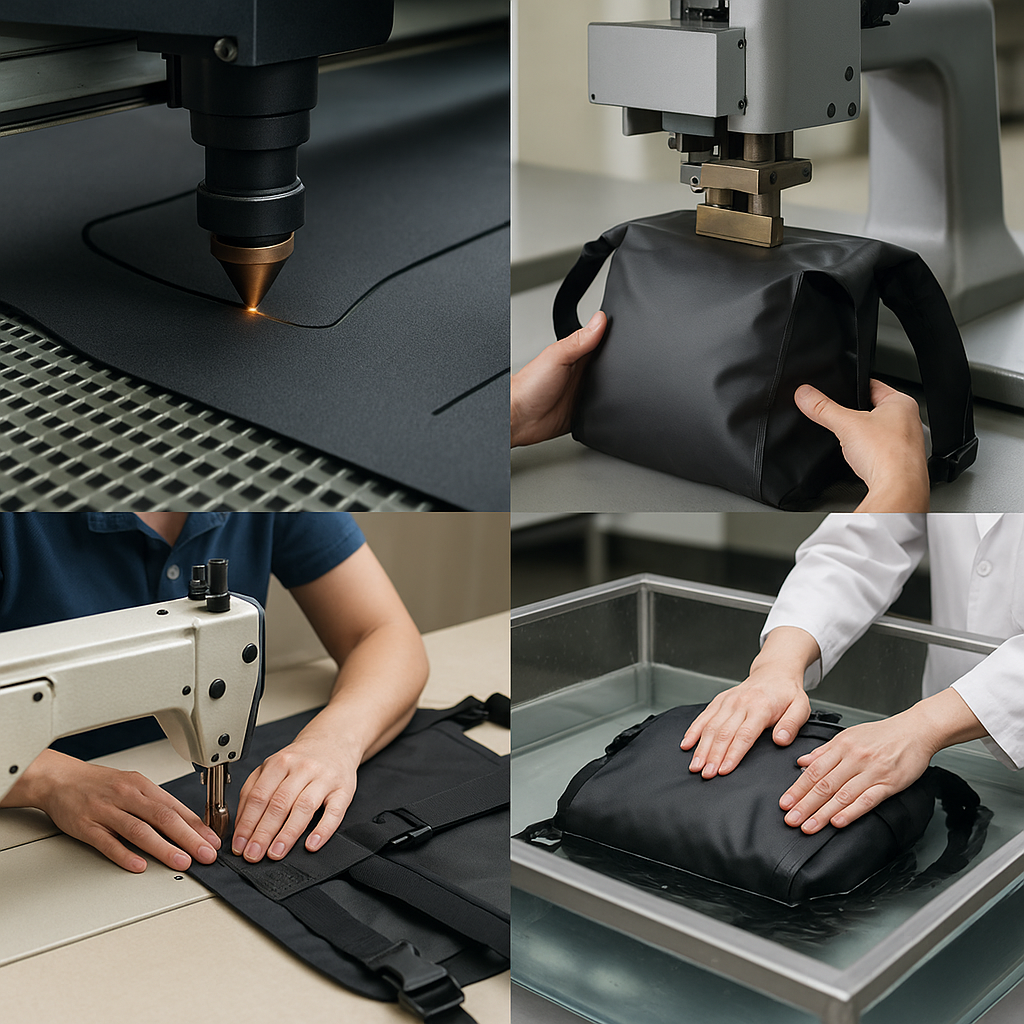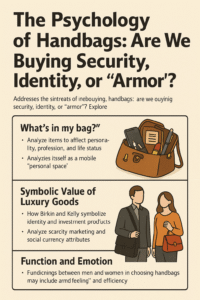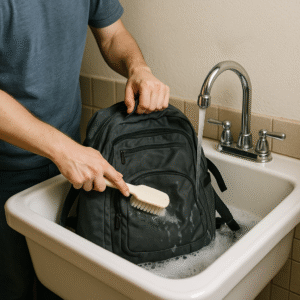High-performance outdoor backpack rely on a range of cutting-edge manufacturing techniques. Today’s industry leaders combine precision cutting, innovative welding methods, ergonomic pattern making, reinforced stitching, and rigorous quality control. These processes do more than simply produce a bag; they create products that withstand harsh environments, provide comfort under load, and deliver superior waterproof performance. This article details every key step—from the earliest stages of material cutting to the final quality checks—and backs explanations with data and technical insights.

Is laser cut better than Traditional die cut?
The first step in manufacturing a top-tier outdoor backpack is cutting the raw materials. Early methods used traditional die cutting, which presses a pre-made blade (or mold) against a fabric. This approach has some benefits yet also critical drawbacks.
Traditional Die Cutting Die cutting involves using a pre-fabricated blade mold to stamp the desired shapes out of materials. Backpack Manufacturers appreciate the low initial investment and its suitability for bulk production of simple shapes. However, die cutting struggles when intricate curves or small holes are required. Blade wear over time further degrades precision. Additionally, the spacing necessary between fixed molds limits how tightly materials can be arranged. This inefficiency results in a higher rate of leftover scraps and waste. Studies show that material utilization rates can drop by 15–20% when using traditional dies compared to modern methods.
Computer-Controlled Laser Cutting Today’s leading outdoor backpacks benefit from computer-controlled laser cutting. With a finely focused beam, lasers can routinely cut materials with micrometer precision—sometimes better than 50 µm accuracy—even on complex shapes. Manufacturers use advanced nesting software to maximize the arrangement of parts on the material sheet. This software reduces waste by up to 20%, a significant improvement over conventional methods. Furthermore, the laser’s intense beam not only cuts but also thermally seals the cut edge of synthetic fabrics like TPU or PVC. This extra seal prevents the edges from fraying and enhances the overall durability of the product. The use of laser cutting has driven stronger component accuracy and improved overall performance of the backpack during subsequent assembly stages.
In summary, laser cutting offers exceptional precision and efficiency. Its investment cost is higher, but the reduction in material waste and the improvement in product integrity can justify the expense for premium products.
What is the difference between ultrasonic and high frequency welding?
After precision cutting, the next vital stage involves joining the individual components of the backpack. High-frequency (HF) welding and ultrasonic welding provide solutions that create waterproof, durable seams without the vulnerability of needle punctures.
High-Frequency (HF) Welding High-frequency welding uses electromagnetic fields to heat thermoplastic materials. When these fields interact with polymers like TPU (thermoplastic polyurethane) or PVC-coated fabrics, they cause the molecules to vibrate rapidly. This friction produces heat that melts the edges of the fabric layers. Once the electromagnetic field dissipates, the melted materials quickly cool. The process yields a solid bond at the molecular level.
Manufacturers rely on HF welding to achieve waterproof seams. For example, many designs meet the IPX7 standard, which requires the product to withstand immersion in one meter of water for 30 minutes without any water penetration. Some products even reach IPX8, which subjects the material to even harsher conditions. Data collected from laboratory tests show that seams produced by HF welding exhibit nearly 100% success in passing water pressure tests. Its reliability under extreme conditions makes it ideal for backpacks intended for water sports or challenging weather conditions.
Ultrasonic Welding Ultrasonic welding offers a different approach. In this method, high-frequency mechanical vibrations (typically in the range of 20–40 kHz) create friction between two contacting surfaces. This localized friction generates enough heat to melt a thin layer of the materials. Under controlled pressure, the surfaces fuse together at the molecular level.
While ultrasonic welding also produces highly water-resistant seams, it best serves parts that require a smoother finish. In some applications, manufacturers pair ultrasonic welding with special coatings or sealants to ensure full compliance with IPX7 waterproof standards. Comparative studies indicate that while HF welding produces seams with slightly higher tensile strength, ultrasonic welding yields edges that remain flatter and more aesthetically pleasing—an important factor for modern designs.
Both HF and ultrasonic welding have clear advantages over traditional stitching. Sewing naturally creates needle holes that can compromise waterproof performance, even when coated with adhesives. Laser cutting followed by precise welding eliminates these weak points. The accuracy and improved bonding join forces to secure backpacks against the rigorous demands of outdoor adventures.
How to choose professional pattern making and sewing?
Despite the advances in welding technologies, not every section of a backpack can avoid the need for careful stitching. Critical areas that endure heavy loads require the precision of expert pattern making and reinforced stitching.
3D Pattern Cutting for Ergonomic Fit Modern backpack design departs from flat, two-dimensional panels. Companies now employ 3D pattern cutting techniques to incorporate ergonomic curves that match the human body. This method begins in the design phase, where engineers use data from biomechanical studies. For example, research has found that well-fitting backpacks can reduce the load on the shoulders by up to 35%. These ergonomic designs distribute weight evenly across the body, alleviating pressure points and enhancing overall comfort during long treks. Combined with advanced laser-cut parts, precise pattern cutting enables manufacturers to propose customized shapes that better match the wearer’s anatomy.
Bar-Tack Reinforced Stitching Certain junctions demand extra strength. These include shoulder strap attachments, handles, waist belts, and the ends of compression straps. Manufacturers use bar-tack stitching to reinforce these high-stress areas. Instead of using long, continuous seams, bar-tacks employ concentrated stitching in a localized zone. This technique increases the tensile strength of the joint dramatically and minimizes the risk of tearing under load. Lab tests have shown that properly executed bar-tacks can boost seam durability by up to 40% compared to standard stitches. This reinforcement is crucial for backcountry gear, where unexpected strains frequently jeopardize equipment integrity.
Manufacturers combine these traditional yet advanced sewing techniques with modern welding methods to achieve a balance of structural strength and wearability. By ensuring that every curve and joint receives the proper treatment, companies produce backpacks that address the physical demands of outdoor exploration.
What is the rigorous quality control process?
Quality control (QC) remains the cornerstone of manufacturing top-tier outdoor backpacks. QC processes span from the moment raw materials arrive until the final product leaves the factory.
Incoming Quality Control (IQC) The quality process begins with inspecting raw materials. Fabrics, woven straps, zippers, buckles, and padding undergo detailed examinations. Test items include color fastness, tensile strength, and tear resistance. For instance, color fastness tests expose materials to light, abrasion, and washing conditions. The zippers may experience cycle tests, running through hundreds of open-close cycles to ensure smooth operation. Tensile strength tests determine if fabrics hold up under stress (often requiring a minimum force of 20–30 Newtons per centimeter). Manufacturers track these parameters based on standards from organizations like ASTM International and ISO. Such stringent checks ensure that only materials meeting high-performance criteria enter the production line.
In-Process Quality Control (IPQC) During production, QC specialists perform continuous inspections. They verify the accuracy of laser cuts, the integrity of welded seams, and the consistency of stitching. For example, in waterproof tests, parts may undergo simulated water immersion to replicate IPX7 conditions. A dedicated team checks for air bubbles or water ingress at regular intervals during production. These real-time verifications allow companies to catch and correct issues before they affect the entire batch. In-process checks also focus on assembly accuracy. Misaligned components or irregular seam patterns trigger immediate remedial actions. This proactive monitoring raises production efficiency and ensures every outdoor backpack consistently meets design expectations.
Final Quality Control (FQC) After production, each finished outdoor backpack undergoes a thorough final inspection. Here, inspectors evaluate the overall appearance, functionality, and performance. They check that there are no stray threads, unsightly marks, or minor defects that could affect durability or aesthetics. In addition, the backpacks face functional tests. Load testing simulates carrying weights between 20 and 25 kilograms over rugged terrain. Such tests gauge the overall stability and strength of the assembled product. Manufacturers also conduct water resistance tests, where a sample bag remains submerged at 1 meter for at least 30 minutes. Successful tests confirm that all welded seams and stitched areas maintain their waterproof integrity under pressure.
Quality control in outdoor backpack manufacturing is not a mere formality but a systematic approach to secure the safety and performance of outdoor gear. The meticulous checks at each stage build consumer trust and affirm that the product is engineered for extreme conditions.
Conclusion
From the first laser cut achieving sub-millimeter precision to the meticulously executed high-frequency and ultrasonic welds, every step in manufacturing a premium outdoor backpack reflects the fusion of art and engineering. The precision cutting stage optimizes material use while ensuring that every component fits perfectly. Advanced welding techniques create seams with no needle holes, which in turn establish the bag’s renowned waterproof capability. Ergonomic 3D pattern cutting and reinforced bar-tack stitching address human comfort and durability. Moreover, the rigorous quality control methods certify that every backpack can endure the pressures of mountain trails, water crossings, and heavy use across diverse environments.
Consumers choosing these backpacks enjoy a blend of science and craftsmanship that guarantees reliability on the most challenging adventures. The data support—from material utilization improvements of 15–20% with computer-controlled laser cutting to tensile strength gains of nearly 40% with reinforced stitching—demonstrates that every design choice is grounded in performance metrics. Such technical rigor turns a simple backpack into a trusted companion for outdoor enthusiasts worldwide.
In today’s market, where both performance and style matter, premium outdoor gear must meet strict standards. Whether braving sudden downpours or trekking over rugged landscapes, a well-engineered backpack provides safety, comfort, and longevity. The integration of precision cutting, advanced welding, ergonomic design, and strict quality controls has set a new benchmark in outdoor gear manufacturing. This emphasis on engineering excellence and user-centered design will continue to inspire innovation as the demand for sustainable, high-performance outdoor equipment grows.
By understanding these manufacturing techniques and the data behind them, enthusiasts and professionals alike gain insights into why certain backpacks outperform the rest. The next time you pack your bag for an expedition, remember the state‐of‐the‐art technologies that work behind the scenes to ensure a secure, comfortable, and lasting experience.



